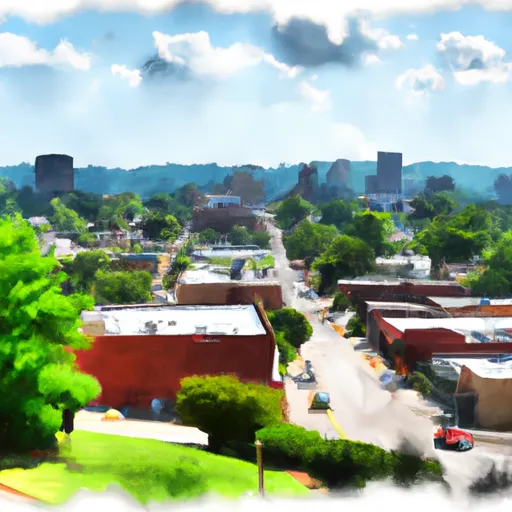-
 Snoflo Premium
Snoflo Premium
Get unlimited access to all our content
With no Ad interruptions! - Start Your Free Trial Login with existing account
Louisville
Eden Index
Climate
8.3
•
Recreation
0.7
•
Community
1.3
•
Safeguard
3.9/10

Louisville, Georgia is located in Jefferson County and offers a pleasant climate with distinct seasons. Summers are hot and humid, with average temperatures reaching around 90°F (32°C). Winters are mild, with temperatures averaging around 50°F (10°C). Spring and fall bring comfortable temperatures, perfect for outdoor activities.
The city is situated near the Ogeechee River, which provides a variety of hydrology constituents. The river offers opportunities for boating, kayaking, and fishing, with species such as bass, catfish, and bream. Nearby lakes, including Lake Strom Thurmond and Clarks Hill Lake, also provide additional recreational options for water enthusiasts.
Outdoor recreation opportunities in Louisville extend beyond water activities. The city has several parks and green spaces, including the Louisville City Park, which features picnic areas, playgrounds, and walking trails. For nature lovers, the Ogeechee Technical College Nature Trail offers a scenic hiking experience through forests and wetlands.
Overall, Louisville, Georgia provides a favorable climate for outdoor activities throughout the year, with a variety of options for water enthusiasts and nature lovers alike.
What is the Eden Index?
The Snoflo Eden Index serves as a comprehensive rating system for regions, evaluating their desirability through a holistic assessment of climate health, outdoor recreation opportunities, and natural disaster risk, acknowledging the profound impact of these factors on livability and well-being.
Climate Health Indicator (CHI): 8.3
Louisville receives approximately
1128mm of rain per year,
with humidity levels near 86%
and air temperatures averaging around
18°C.
Louisville has a plant hardyness factor of
8, meaning
plants and agriculture in this region tend to thrive here all year round.
By considering the ideal temperature range, reliable water supplies, clean air, and stable seasonal rain or snowpacks, the Climate Health Indicator (CHI) underscores the significance of a healthy climate as the foundation for quality living.
A healthy climate is paramount for ensuring a high quality of life and livability in a region, fostering both physical well-being and environmental harmony. This can be characterized by ideal temperatures, reliable access to water supplies, clean air, and consistent seasonal rain or snowpacks.
Weather Forecast
Streamflow Conditions
Ogeechee
Area Rivers
Ogeechee
Snowpack Depths
Ogeechee
Reservoir Storage Capacity
Ogeechee
Groundwater Levels
Recreational Opportunity Index (ROI): 0.7
The Recreational Opportunity Index (ROI) recognizes the value of outdoor recreational options, such as parks, hiking trails, camping sites, and fishing spots, while acknowledging that climate plays a pivotal role in ensuring the comfort and consistency of these experiences.
Access to outdoor recreational opportunities, encompassing activities such as parks, hiking, camping, and fishing, is crucial for overall well-being, and the climate plays a pivotal role in enabling and enhancing these experiences, ensuring that individuals can engage in nature-based activities comfortably and consistently.
Camping Areas
| Campground | Campsites | Reservations | Toilets | Showers | Elevation |
|---|---|---|---|---|---|
| Mistletoe State Park | None | 431 ft | |||
| Clay Hill - Strom Thurmond Lake | None | 358 ft | |||
| Falling Rocks County Park | 20 | 129 ft | |||
| Ridge Road - Strom Thurmond Lake | None | 399 ft | |||
| Raysville - Strom Thurmond Lake | None | 381 ft | |||
| Wildwood County Park | 61 | 447 ft | |||
| Towns Bluff County Park | None | 114 ft | |||
| Petersburg - Strom Thurmond Lake | None | 440 ft | |||
| Big Hart - Strom Thurmond Lake | 31 | 367 ft | |||
| Lake Leitner Military | None | 348 ft |
Nearby Ski Areas
Catastrophe Safeguard Index (CSI):
The Catastrophe Safeguard Index (CSI) recognizes that natural disaster risk, encompassing floods, fires, hurricanes, and tornadoes, can drastically affect safety and the overall appeal of an area.
The level of natural disaster risk in a region significantly affects safety and the overall livability, with climate change amplifying these risks by potentially increasing the frequency and intensity of events like floods, fires, hurricanes, and tornadoes, thereby posing substantial challenges to community resilience and well-being.
Community Resilience Indicator (CRI): 1.3
The Community Resilience Indicator (CRI) recognizes that education, healthcare, and socioeconomics are crucial to the well-being of a region. The CRI acknowledges the profound impact of these elements on residents' overall quality of life. By evaluating educational resources, healthcare accessibility, and economic inclusivity, the index captures the essential aspects that contribute to a thriving community, fostering resident satisfaction, equity, and social cohesion.

